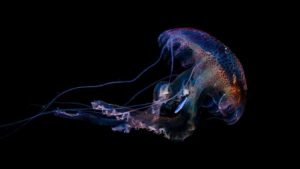The “immortal jellyfish” was discovered in the 1980s by Christian Sommer and Giorgio Bavestrello, and since then, various studies have been conducted on this elusive marine species. On this occasion, a group of Norwegian researchers found that adult comb jellies reverse their development and transform back into larvae when under stress.
While “immortal” is a somewhat misleading term, the development of these jellyfish features a regression from the adult stage with lobes to an early larval state when stressed, explained Pawel Burkhardt, one of the researchers, an evolutionary neuroscientist, and director of the medical group at the University of Bergen’s Michael Sars Centre.
To reach this conclusion, the experts used two methods to stress these jellyfish: prolonged starvation and physical damage or “lobectomy”, cutting the adult lobes, in addition to a reduced feeding regime. After applying these techniques, the researchers observed that animals with lobectomy had lower mortality rates and a higher reversion success, with 40% of the animals completely reverted; while those under prolonged starvation only achieved a success rate of 14%.
However, it is not clear if the presence of this life cycle and survival strategy occurs only in a single species, an aspect that is important to resolve for researchers who aim to trace the precise process.

Development and Survival of the Immortal Jellyfish
Scientists have demonstrated that the ctenophore Mnemiopsis leidyi species is capable of regrowing into an adult after transforming into a larva. “It’s very dynamic. Once it reverts to the larval stage, if provided with enough food, it can regrow into an adult,” said Burkhardt.
While the cycle can repeat itself over and over, this does not mean they live forever, as they could be devoured by a predator, losing their immortal status. However, being a “highly invasive species,” these discoveries may have an ecological impact, as there is a theory that their fault caused the collapse of fisheries in the Black Sea.
Researchers assure that their larvae feed in a completely different way than adults, as they require much more food, which could be a survival strategy under harsh conditions.

Could this mechanism be applied to humans?
On several occasions, aging has been cited as the main cause of death, as cell degeneration occurs, and brain plasticity, meaning the nervous system’s ability to adapt over time, slows down. While several studies have tried to find ways to slow down this process, the only achievement has been to lead a more pleasant life as natural death approaches.
“I can only speculate,” said Burkhardt. But there seems to be “a significant reorganization in the nervous system (between the two stages), and that’s what we want to observe in the coming years,” added the researcher.
Have you checked out our YouTube channel? Subscribe now!

